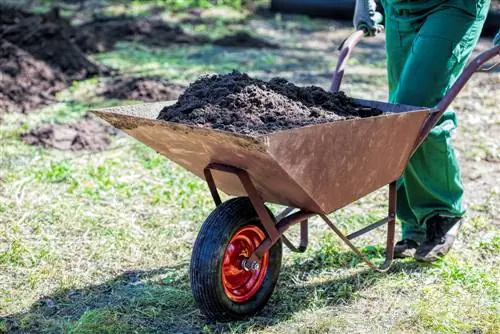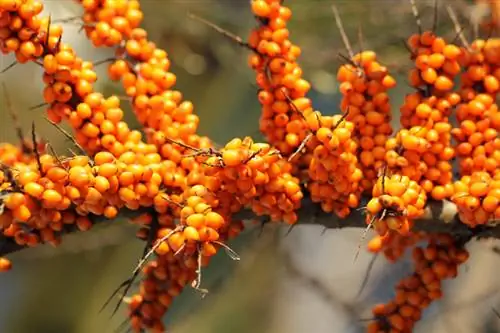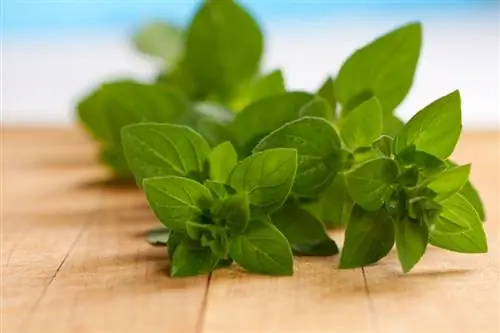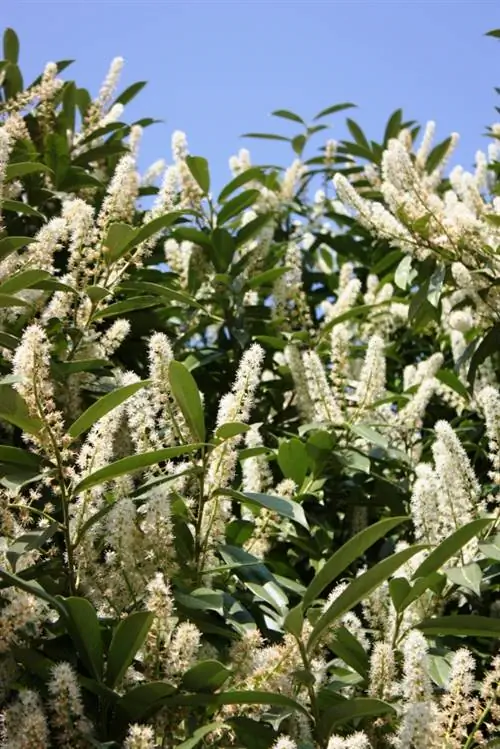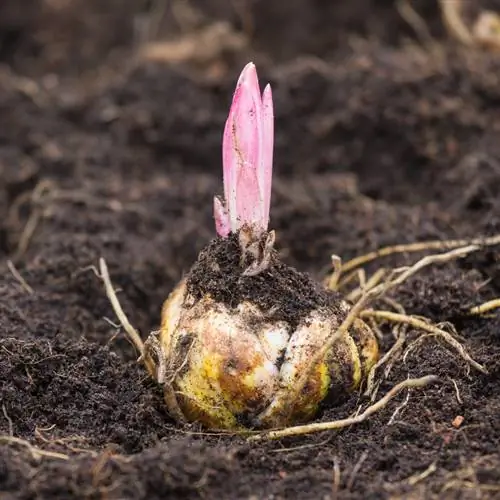- Author admin [email protected].
- Public 2023-12-16 16:46.
- Last modified 2025-01-23 11:21.
There is great disagreement about the best time to spread the mature substrate. Compost has been spread in autumn for many generations. But the compost can also be used in spring. Both times have their advantages and disadvantages.

When should you apply compost?
Compost can be spread both in autumn and spring. In autumn you benefit from frost and less competition, while in spring the nutrient concentration is higher. However, both times also have disadvantages such as nutrient leaching or pests.
Autumn
In autumn the leaves fall from the trees. They form a natural protective layer for the soil, which is full of dead plant parts. The material rots over the winter and provides a nutrient-rich substrate for the newly germinating plants in the spring. You can use this cycle as a guide when spreading compost.
Advantages
Over the winter, the compost freezes on the ground, killing parasites and pathogens. The frost breaks up coarser substrate components and the compost is fine and crumbly in spring. This soil is directly available to the plants for the coming growing season.
Disadvantages
Rainfall in autumn and winter can wash out nutrients from the compost substrate if the soil can no longer absorb the water. The substances are deposited in depressions and oversaturate the soil. In the fall, many seeds from competitive plants try to germinate. Even in winter, plants continue to grow near the bed. These seedlings and plants utilize the nutrients and minimize the nutrient content of the soil.
Spring
Spring is a suboptimal time to spread compost. Despite the advantages, the negative aspects outweigh the negative aspects and you have to work the soil before spreading to get an ideal substrate.
Advantages
The concentration of nutrients is highest when applied in spring because they have not been washed out by rainfall or consumed by other plants. Direct incorporation in spring ensures an evenly supplied area with compost.
Disadvantages
The consistency of fresh soil is firmer. Compost soil from thermal composters can contain many pathogens and pests that have overwintered in the warm environment. These undesirable organisms are spread onto the bed with the substrate. If you want to sow early vegetables, you have to spread the compost early in the year. This increases the risk of nutrient leaching when it rains heavily.
How to improve the substrate:
- Turn compost in dry weather
- Sifting and loosening compost soil
- let the sifted substrate dry in a bin

